In many parts of the world, water scarcity is becoming a growing concern. People are constantly looking for ways to save water and reduce utility bills. One of the simplest and most effective methods to achieve this is by installing a Rainwater Collection System at home. This system not only helps conserve water but also cuts down on monthly water expenses. It’s an eco-friendly solution that supports sustainable living—something every household can benefit from.
Why Are More Homeowners Choosing Rainwater Harvesting Systems?
Have you ever wondered how you can reduce your dependence on municipal water and still have a reliable water supply? A rainwater harvesting system offers exactly that. It collects and stores rainwater from rooftops, which can be filtered and used for multiple purposes like gardening, cleaning, and even flushing toilets. With rising water bills and irregular rainfall patterns, homeowners are now realizing that rainwater can be turned into a dependable resource.
What makes this system even more appealing is that it’s cost-effective and requires minimal maintenance once installed. Plus, it reduces pressure on public water systems and contributes to environmental conservation.
How a Rainwater Harvesting Project Works Step-by-Step?
A rainwater harvesting project typically involves four main steps: collection, filtration, storage, and usage. Rainwater is first collected from rooftops and directed through pipes into a tank. Before entering the tank, it passes through filters to remove dirt, leaves, and debris. The clean water is then stored for later use.
Modern systems come with automated mechanisms that ensure proper flow and minimal contamination. The stored water can be used directly for non-drinking purposes, or it can be connected to a Home Water Filtration System for safe household use. This process makes it both a sustainable and smart choice for modern homes.
Importance of Using a Quality Rainwater Harvesting Filter
One of the most crucial components of any system is the rainwater harvesting filter. Without proper filtration, debris and pollutants can contaminate the stored water. A high-quality filter removes dust, leaves, and other particles, ensuring clean water reaches your storage tank.
For homeowners, this means fewer maintenance issues and longer-lasting equipment. Investing in a good filter saves time and ensures the collected rainwater is suitable for various household applications. It also enhances the overall efficiency of the entire setup.
Why the Rainy Filter Is a Game-Changer?
When it comes to reliability and performance, the rainy filter stands out. Designed with advanced self-cleaning technology, it requires minimal maintenance while delivering high filtration efficiency. It separates impurities effectively and prevents clogging—a common problem in traditional filters.
Its durable design makes it suitable for all weather conditions, ensuring uninterrupted operation throughout the year. If you want a hassle-free way to harvest clean rainwater, this filter can make a significant difference. It’s ideal for homes, offices, and even small commercial buildings.
How a Rainwater Filter System Improves Water Quality?
A rainwater filter system ensures that the stored rainwater remains safe and clean. This setup typically includes pre-filters, first-flush systems, and final-stage purification. Each stage removes a different level of contamination, improving water clarity and safety.
Many people use this water for gardening, washing cars, or even laundry. With proper treatment, it can also be made potable. Installing a filter system adds an extra layer of protection, making rainwater a practical and reliable secondary water source.
The Role of RainwaterFilter for Home Efficiency
Homeowners often overlook how much water is wasted daily. A rainwater filter for the home helps reduce dependency on groundwater or municipal supply. It captures rainwater efficiently, which can then be used for daily chores.
Not only does this lower your water bills, but it also supports eco-conscious living. Over time, such systems pay for themselves through savings on water usage and reduced maintenance costs. When paired with the right filtration, you get an uninterrupted supply of clean water without any added stress.
Real-Life Benefits of Adopting Rainwater Harvesting
Across cities, families who have adopted rainwater harvesting methods report substantial savings. Beyond financial benefits, they also contribute to local water conservation efforts. Rainwater is naturally soft, reducing scaling in pipes and appliances, which means less maintenance and longer equipment life.
Moreover, these systems reduce the load on drainage networks and prevent flooding during heavy rains. It’s a win-win situation for both the environment and the homeowner.
Why You Should Start Your Own Rainwater Harvesting Project?
Implementing a personal rainwater harvesting project may sound complex, but modern systems are easy to install and require little upkeep. Professional installers can set it up in a few hours, and you can start collecting water immediately.
Whether you live in a city apartment or a suburban house, there’s a suitable design for every space. Over time, you’ll notice significant reductions in your water bills while contributing to sustainable resource management.
A Smarter Way to Secure Your Water Future
By investing in a Rainwater Collection System, you’re not just saving money—you’re securing your family’s water supply for years to come. This small step can have a lasting impact on both your household and the environment. With innovations like Rainy Filters, harvesting and using clean rainwater has never been easier.
Make the change today. Visit Rainy Filters and explore practical solutions for sustainable water management.
Key Takeaways:
-
A Rainwater Collection System helps conserve water and reduce utility costs.
-
Quality filters, like Rainy Filters, ensure cleaner and safer stored water.
-
Rainwater harvesting supports sustainability and reduces dependency on public water sources.
-
Modern filtration systems require minimal maintenance and are easy to install.
-
Investing in a rainwater system contributes to long-term water security and environmental balance.
FAQ’s:
1. How much can I save using a rainwater harvesting system?
Depending on your usage, you can reduce your water bills by up to 50–70%, especially if you use stored rainwater for non-potable purposes.
2. Can I use harvested rainwater for drinking?
Yes, but only after it passes through a proper rainwater filter system and is treated for safety.
3. How often should I clean my rainwater filters?
It depends on rainfall and surrounding debris. However, with self-cleaning models like Rainy Filters, maintenance is minimal.
4. Is it expensive to install a rainwater collection setup?
Initial costs vary based on size and design, but most homeowners find the system pays for itself through long-term savings on water bills.
5. Can I integrate rainwater harvesting with my existing Home Water Filtration System?
Yes, integration is possible. In fact, combining both systems ensures that the rainwater you collect is clean and ready for safe household use.

